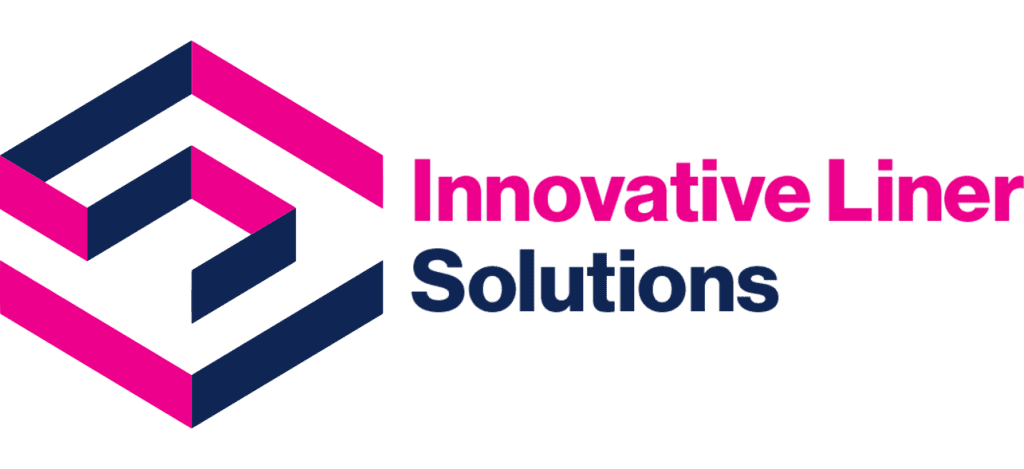Understanding the Importance of IBC Packaging Materials and Components
Intermediate Bulk Containers (IBCs) are among the most efficient and widely used solutions for shipping and storing liquids across multiple industries. Their design offers durability, stackability, and the ability to handle large volumes, but the true effectiveness of IBCs comes from the materials and components that support them. IBC packaging materials are not just accessories—they are essential parts of the system that protect products, extend container life, and streamline logistics.
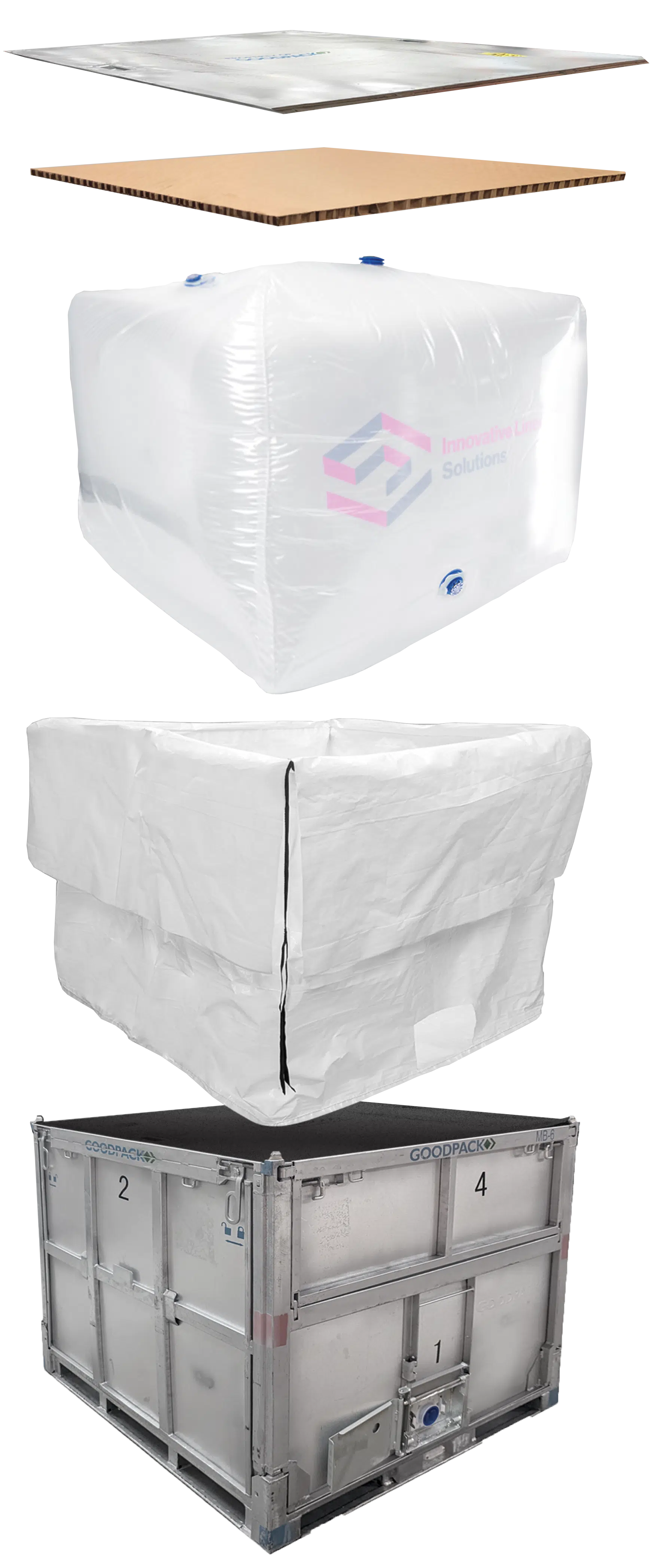
This comprehensive guide explains the critical components that make IBCs reliable, focusing on protective container liners, dunnage boards, base pads, top lids, open top liners, and polypropylene liners. By understanding how these bulk liquid packaging components work together, businesses can make informed choices that improve safety, reduce costs, and support sustainability.
How Protective Container Liners Improve Bulk Liquid Shipping
Protective container liner systems are central to safe and efficient bulk liquid shipping. They form a barrier between the product and the inner walls of an Intermediate Bulk Container (IBC), ensuring that liquids stay uncontaminated while also extending the service life of the container itself. For industries that depend on product purity, durability, and cost efficiency, liners are not just an option but a necessity.
Protective container liner systems are central to safe and efficient bulk liquid shipping. They form a barrier between the product and the inner walls of an Intermediate Bulk Container (IBC), ensuring that liquids stay uncontaminated while also extending the service life of the container itself. For industries that depend on product purity, durability, and cost efficiency, liners are not just an option but a necessity.
Why Protective Liners Are Needed
Shipping bulk liquids without a liner leaves both the product and the container vulnerable.
Contamination Concerns
Liquids placed directly into an IBC may pick up residues left behind from previous use. Even when the container is cleaned, microscopic particles, bacteria, or traces of prior products can linger. In industries like food, beverage, and pharmaceuticals, these contaminants can compromise quality and safety standards.
Residue and Build-Up
Certain liquids, such as oils, syrups, or chemicals, leave behind films or sticky deposits. Over time, this residue builds up on container walls and requires intensive cleaning to remove. Liners prevent direct contact, eliminating most of these issues and reducing cleaning needs dramatically.
Chemical Reactions
Industrial chemicals or solvents may interact with the materials of an IBC. This not only risks altering the product but can also weaken the container. A protective container liner creates a neutral barrier, keeping products isolated and secure.
Improved Hygiene
By preventing direct liquid-to-wall contact, liners maintain a clean, sterile shipping environment. This is especially important for consumables, cosmetics, and pharmaceutical ingredients where hygiene is non-negotiable.
Preserved Product Integrity
With liners in place, liquids arrive at their destination in the same state they were shipped. No outside residues, particles, or moisture affect the cargo. This consistent protection ensures quality control across long supply chains.
Extended Container Life
Since liners take the brunt of stress, pressure, and residue, the IBC’s internal surfaces remain in better condition. Businesses can use the same containers multiple times without damage or heavy wear, lowering replacement costs.
Lower Operating Costs
Washing down IBCs between uses is labor-intensive and resource-heavy. Liners reduce or eliminate this process, cutting down on water, energy, and cleaning agents while speeding up container turnover.
Sustainability Support
Minimized cleaning also lowers the environmental footprint of operations. By reducing water and chemical use, liners help companies align with sustainability targets while also reducing waste from prematurely retired containers.
Benefits of Using Protective Liners
The advantages of protective liners span operational, financial, and environmental considerations.
Polypropylene Container Liner Solutions
Among liner types, the polypropylene container liner is one of the most versatile.
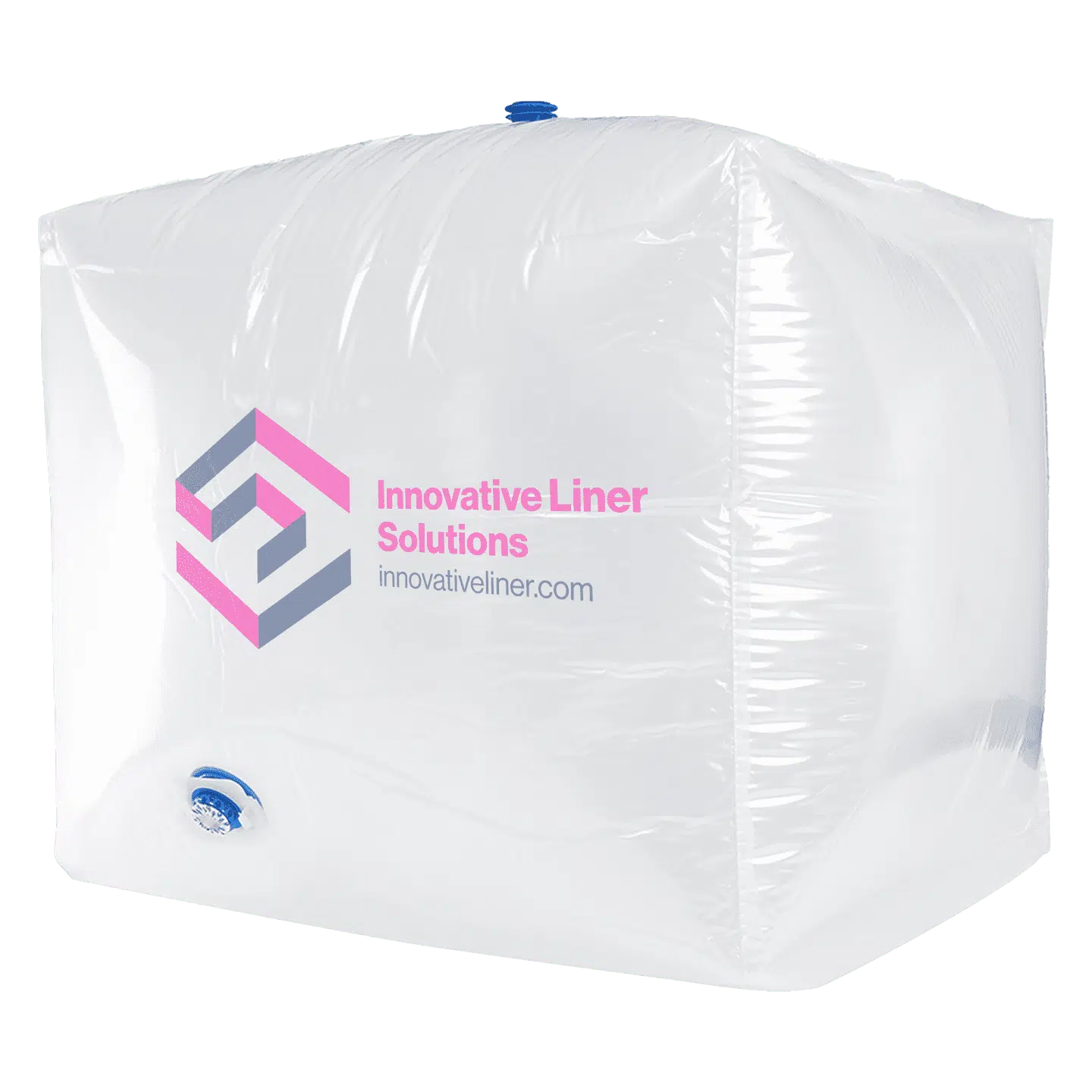
Properties of Polypropylene
Resistant to acids, bases, and solvents
Lightweight yet strong, simplifying installation
Hygienic and non-reactive, making it ideal for food, cosmetic, and pharmaceutical shipping
Capable of withstanding temperature fluctuations without losing performance
Puncture-resistant for added durability during transport
Industry Applications
Food and beverage: Oils, syrups, and juices remain uncontaminated and fresh.
Chemicals: Aggressive liquids such as cleaners or solvents are safely isolated.
Cosmetics and pharmaceuticals: Hygienic barrier ensures product compliance with industry regulations.
Automotive: Lubricants, coolants, and antifreeze are transported securely with reduced risk of leaks.
Polypropylene liners strike a balance between cost efficiency and high performance, making them a go-to choice for many industries.
Operational Efficiency Gains
Protective liners streamline shipping and handling in ways that extend beyond product safety.
Faster turnaround: Containers can be emptied, the liner replaced, and the container returned to service without downtime for cleaning.
Reduced product waste: Since liners prevent punctures and leaks, fewer losses occur during shipping.
Simplified inspections: Liners make it easier to check for cleanliness and integrity before loading new products.
These advantages improve productivity across warehouses, shipping hubs, and manufacturing facilities.
Liners in a Complete System
Protective liners are most effective when paired with other IBC protective packaging supplies. Each component strengthens a different part of the container system.
IBC Dunnage Boards
Placed inside the container, these boards distribute the liquid’s weight evenly. This prevents concentrated pressure points that could stretch or puncture liners.
IBC Base Pads
The base of the container is highly vulnerable to friction from forklifts, pallets, and warehouse floors. Base pads cushion the liner from beneath, reducing wear and helping prevent leaks.
IBC Top Lids and IBC Container Lids
These seal the unit from above, keeping contaminants such as dust, moisture, or airborne particles out. They also hold liners securely in place during filling and transport, preventing folds or shifting.
Open Top Liners
When paired with polypropylene liners, open top liners add flexibility for filling, especially with viscous liquids. They also make inspections easier and allow operators to use larger filling equipment.
When all these bulk liquid packaging components are combined, they create a reinforced system. The liner acts as the protective barrier, while dunnage boards, base pads, and container lids stabilize and safeguard the IBC from multiple angles.
Regulatory and Quality Compliance
Many industries require strict adherence to hygiene and safety standards. Protective liners help companies meet these requirements by ensuring that products remain uncontaminated and containers remain in reusable condition. Whether complying with food safety laws, pharmaceutical regulations, or chemical transport guidelines, liners provide the consistent level of protection needed to pass audits and maintain customer trust.
The Role Of Dunnage Boards, Base Pads, And Top Lids In IBCs
While protective liners form the critical barrier between the product and the container, they are only one part of a larger system of IBC packaging materials.
Dunnage boards, base pads, and top lids each strengthen the IBC in specific ways, reinforcing its structure, protecting liners from damage, and ensuring that products remain safe during storage and transit. These bulk liquid packaging components work together to extend container life, reduce product loss, and improve overall shipping reliability.
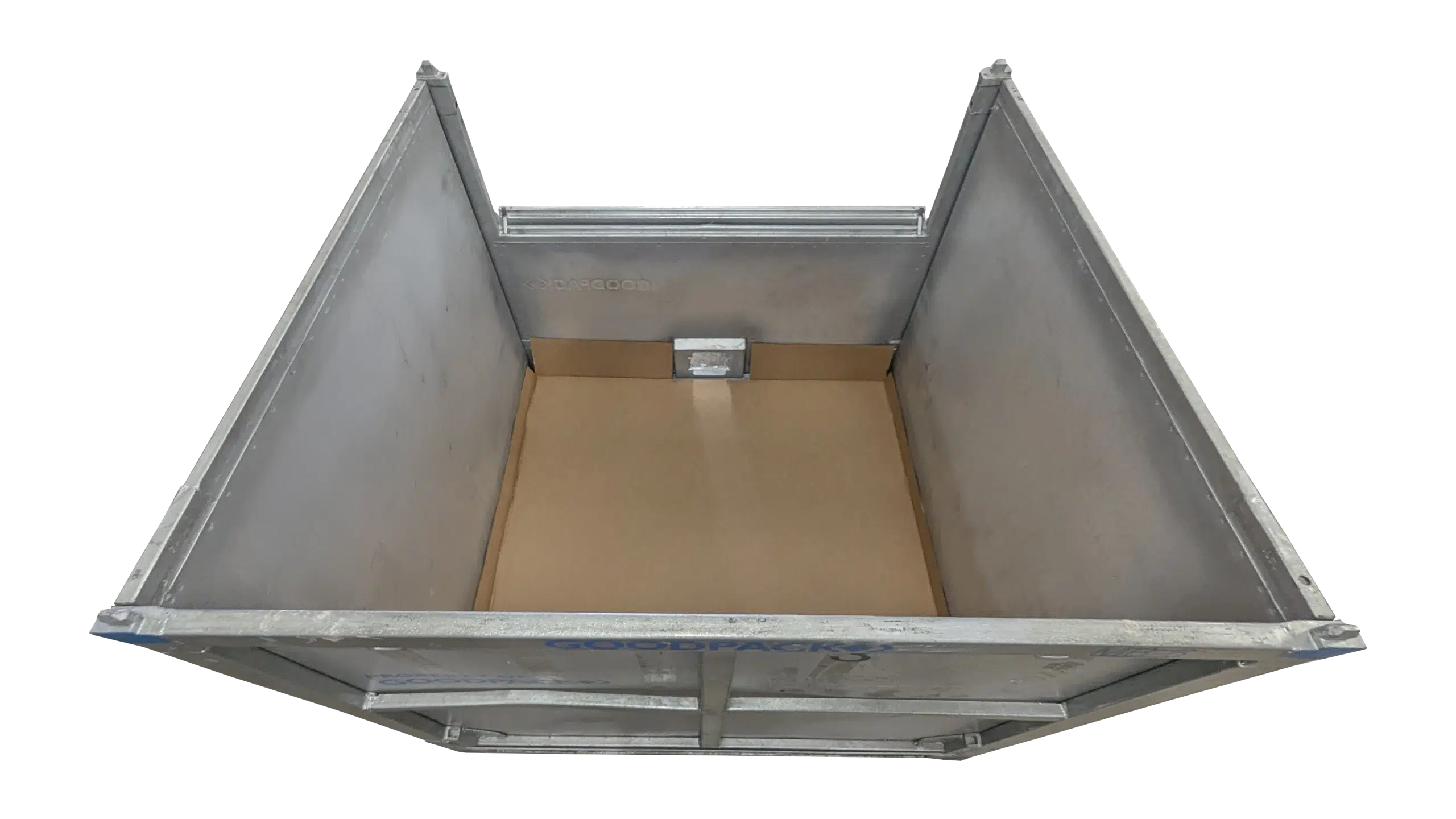
What Do IBC Dunnage Boards Do?
Liquids inside an IBC exert pressure equally in all directions, and this constant force can strain liners and container walls. Without internal reinforcement, the weight of the liquid often concentrates in certain areas, increasing the risk of stretching or punctures.
IBC dunnage boards solve this issue by distributing the load evenly across the interior. Acting as stabilizers, they reduce stress on liners, ensuring that pressure is balanced even during movement or stacking.
Key Benefits of IBC Dunnage Boards
Industry Applications
How Do IBC Base Pads Protect Liners?
The bottom of an IBC is one of its most vulnerable areas. Containers encounter rough warehouse floors, forklift tines, and pallet edges that can cause friction against liners. Without protection, these constant stresses weaken liners, leading to tears, leaks, or premature liner failure.
IBC base pads act as a cushioning layer between the rigid floor of the container and the protective container liner. By absorbing shock and minimizing friction, they preserve liner integrity even under heavy use.
Main Functions of IBC Base Pads
Operational Advantages
For businesses that handle frequent loading and unloading, base pads help reduce downtime by preventing liner damage that might otherwise halt operations. They also support sustainability by extending liner life and reducing waste.
Airborne particles such as dust, dirt, and moisture are constant threats during shipping and storage. Even small amounts of contamination can compromise product quality, especially in industries like food, beverage, cosmetics, and pharmaceuticals. Top lids protect against these risks while also preventing liners from shifting during filling or transport.
Advantages of IBC Top Lids
Preserve product purity and quality by sealing out contaminants
Secure liners in position, reducing folds or misalignment that disrupt product flow
Lower risk of leaks or spills by keeping the system tightly closed
Support industry compliance, ensuring products meet strict hygiene and safety standards
Industry Applications
Pharmaceuticals: Protection from airborne contaminants is vital for sensitive ingredients.
Food and beverage: Lids safeguard consumables from dust and moisture during transport.
Chemicals: Top lids prevent environmental exposure and maintain container stability.
Why Are IBC Top Lids Essential?
While dunnage boards and base pads reinforce the container from within and below, sealing the top is just as critical. IBC top lids and IBC container lids serve as the final line of defense, closing off the container from external contaminants while keeping the liner securely in place.
A Complete Reinforcement System
Dunnage boards, base pads, and top lids are most effective when used together with a protective container liner.
Each addresses a unique point of vulnerability:
Dunnage boards handle internal weight distribution.
Base pads shield liners from bottom friction and vibration.
Top lids seal the container and hold liners securely in place.
When integrated, these bulk liquid packaging components create a reinforced system that maximizes durability, product safety, and container reusability. Businesses benefit from fewer liner failures, lower product loss, and greater efficiency in operations.
This combination of protective packaging supplies transforms an IBC from a simple container into a reliable, long-lasting solution for bulk liquid logistics.
Choosing The Right Open Top Liners And Polypropylene Liners
Both open top liners and polypropylene liners are critical components in bulk liquid packaging, yet they serve different operational needs.
Selecting the right option depends on the type of liquid being shipped, handling requirements, and the priorities of the business. While both protect products and extend the life of IBCs, their distinct features make them better suited to specific applications.
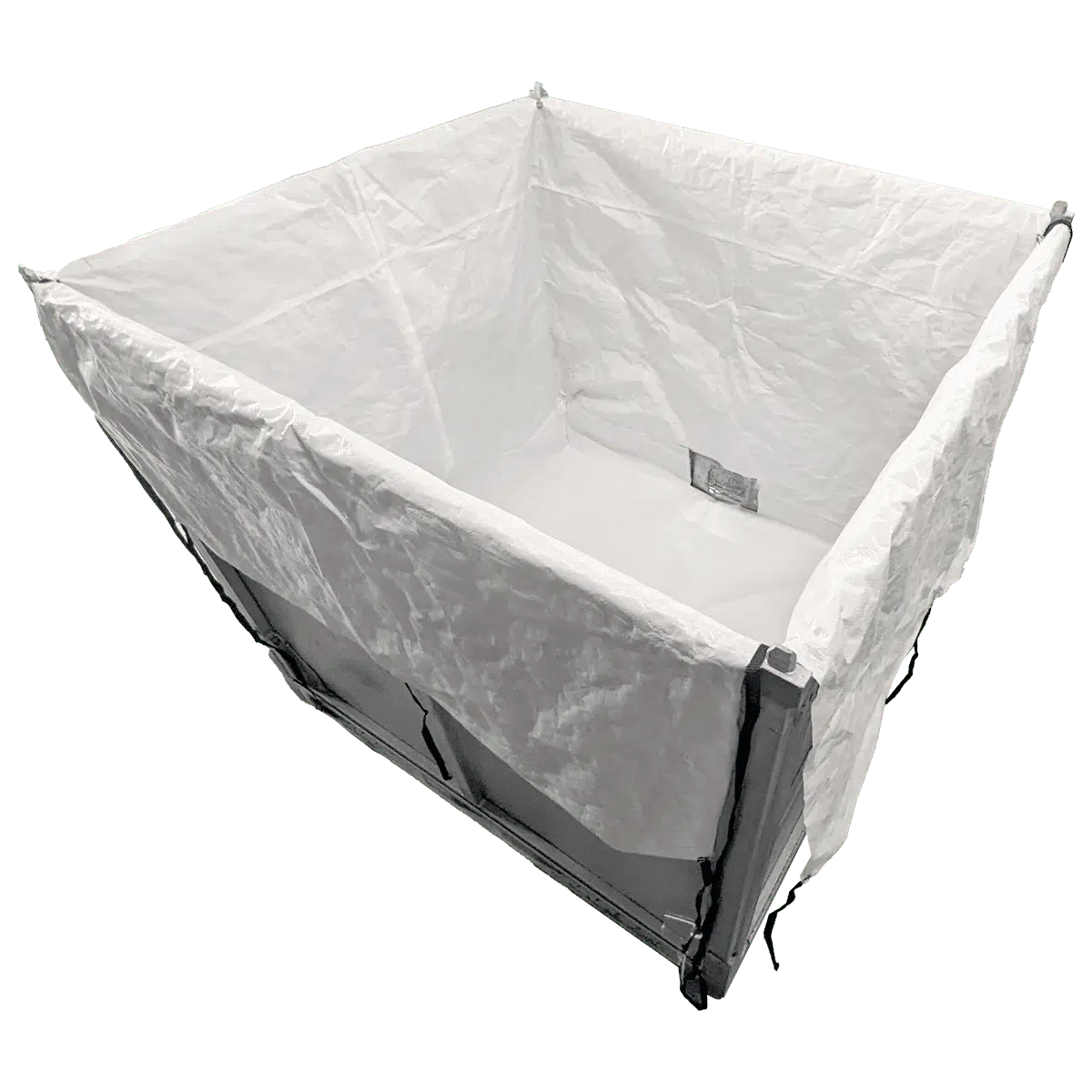
What Is a Polypropylene Liner?
A polypropylene liner is a protective container liner manufactured from polypropylene film, a plastic material known for its durability, flexibility, and strong resistance to chemicals and moisture. These liners form a secure barrier between the product and the container walls, ensuring liquids are kept free of contamination while also preserving the integrity of the IBC.
Properties of Polypropylene Liners
High chemical resistance: Withstand exposure to acids, bases, and solvents.
Moisture barrier: Prevent water ingress or product loss through evaporation.
Strength and flexibility: Resist punctures while remaining easy to install.
Temperature stability: Perform reliably across a wide range of conditions.
Hygienic and non-reactive: Suitable for food, beverage, cosmetic, and pharmaceutical use.
Benefits for Industry Applications
Food and beverage: Keep juices, oils, syrups, and concentrates uncontaminated.
Chemicals: Safely transport solvents, detergents, and industrial liquids.
Pharmaceuticals and cosmetics: Provide a sterile barrier to meet strict standards.
Automotive: Protect lubricants, coolants, and antifreeze during shipping.
By delivering strong resistance while reducing cleaning needs, polypropylene liners improve operational efficiency and sustainability in nearly every sector.
Situations Where Open Top Liners Excel
Viscous or thick liquids: Syrups, gels, creams, and other slow-flowing products benefit from the larger opening, which prevents clogging during filling.
Frequent product changeovers: Facilities that handle multiple products can quickly remove and replace liners, reducing downtime.
Inspection-driven operations: Quality assurance teams can visually confirm liner cleanliness and positioning before filling begins.
Time-sensitive production runs: By simplifying installation and replacement, open top liners minimize delays and increase productivity.
Advantages of Open Top Liners
Easy installation with less chance of folds or misalignment
Faster filling rates, especially with viscous liquids
Compatibility with larger hoses, pumps, or filling nozzles
Simple liner removal and disposal, saving labor during changeovers
Industries that prioritize flexibility, speed, and quality control often choose open top liners to streamline operations without compromising safety.
When Should You Use Open Top Liners?
Open top liners are designed with a wide opening at the container’s top, making them distinct from standard liners. This design improves accessibility and flexibility during filling, inspection, and replacement.
How Do Polypropylene Liners Compare To Other Liners?
While polypropylene liners are versatile, businesses may also encounter polyethylene or multi-layer liner options. Understanding the differences helps identify the most cost-effective and reliable choice.
Polyethylene Liners
Polyethylene liners are widely used due to their affordability and general versatility. They provide basic protection against moisture and contamination but may fall short when transporting aggressive chemicals or solvents. For applications demanding stronger resistance, polypropylene container liner systems offer superior performance.
Multi-Layer Liners
Multi-layer liners are constructed from several films, each engineered for specific protective qualities such as oxygen or vapor barriers. They are useful for specialized applications but tend to be more expensive and complex to manage. In contrast, polypropylene liners provide a more practical, cost-effective solution for a broad range of products without requiring special handling.
Why Polypropylene Is a Balanced Choice
This balance makes polypropylene liners one of the most widely adopted solutions in bulk liquid shipping.
Strong enough for industrial chemicals
Hygienic enough for consumables
Flexible across industries
This balance makes polypropylene liners one of the most widely adopted solutions in bulk liquid shipping.
Why Work With Innovative Liner Solutions
Innovative Liner Solutions provides the full range of IBC packaging materials needed to create safe, reliable, and efficient bulk liquid systems. Their offerings cover every stage of container reinforcement, from protective container liner options to IBC dunnage boards, IBC base pads, IBC top lids, open top liners, and polypropylene container liner solutions. By supplying all of these bulk liquid packaging components, the company ensures that each customer receives a complete and integrated system, rather than just individual parts. This holistic approach reduces risks, simplifies operations, and provides consistency across industries.
Tailored Solutions for Industry Needs
Not every business handles the same products or faces the same shipping challenges. Food producers, chemical manufacturers, cosmetic brands, and automotive suppliers all require different levels of protection, durability, and hygiene. Innovative Liner Solutions applies deep industry knowledge to match IBC protective packaging supplies with specific applications. Whether a company requires the chemical resistance of polypropylene liners, the flexibility of open top liners, or the structural reinforcement of dunnage boards and base pads, the result is a system designed to fit the exact operational priorities of the business.
Focus on Durability and Safety
Shipping bulk liquids often involves long distances, rough handling, and varied storage environments. Containers must remain stable and liners must withstand constant pressure, vibration, and movement. Innovative Liner Solutions prioritizes durability by offering products engineered to resist punctures, friction, and contamination. This commitment ensures not only product integrity but also workplace safety, reducing the risk of spills or accidents during transport and handling.
Commitment to Sustainability
Sustainability is an increasingly important goal across industries, and Innovative Liner Solutions supports companies in reducing their environmental impact. By using high-quality IBC packaging materials, businesses extend the usable life of containers, reduce liner replacement frequency, and cut down on water and chemicals used in cleaning. This reduces waste at every level while supporting corporate sustainability objectives.
Efficiency and Cost Savings
Beyond safety and sustainability, the right packaging system improves overall efficiency. With protective container liners and reinforcement components in place, containers last longer, downtime is reduced, and product losses from leaks or contamination are minimized. Over time, these operational improvements translate into significant cost savings.
Innovative Liner Solutions stands as a trusted partner for companies seeking to optimize their bulk liquid logistics, offering solutions that balance protection, efficiency, and long-term value.
Conclusion
IBC packaging materials are more than just accessories—they are essential components that protect products, maintain hygiene, and extend the life of containers. Protective container liner solutions keep products safe from contamination, while IBC dunnage boards, base pads, and top lids reinforce container strength and safety. Open top liners and polypropylene liners provide specialized solutions for different applications, supporting both operational efficiency and sustainability.
Looking for a complete IBC packaging system?
Innovative Liner Solutions provides everything from protective container liners to IBC dunnage boards, base pads, top lids, and polypropylene liners—engineered for performance, durability, and safety in bulk liquid shipping. Call 815-963-9525 today or contact Innovative Liner to speak with our team about finding the perfect solution for your operation.

